Personal Machines and Portable Worlds
A personal machine balances access to another world with the kinds of limits and boundaries that make a thing private.

A lifelong fascination with technology begins with a single object.
Think back to when you were a child, to when you first encountered something you could hold in your hand that held you in awe. Perhaps you thought to yourself, “Wow, this does that?!”
I asked as many people as I could what that thing was for them. Age, of course, had a lot to do with the range of replies I received. The older people told me about pull-string “talking” toys, reel-to-reel tape players, and the family’s first color television. People my age recalled things that I, too, had used from early on — gadgets like the Speak and Spell, the Sony Walkman, Atari consoles, calculator watches, and more. Younger people seemed to not understand the question, at least not in the same way those of us of Generation X or prior did. I got answers, but they often came with explanations like, “I dunno…everything was technology…this was just my favorite thing.” And, at least in my observation, most of those favorite things were much closer to the sort of personal device everyone has today. Things like the LeapFrog Leapster (a portable gaming system), the Sidekick (a mobile phone), and the iPod — all mentioned — not only have counterparts still in wide use today but were created at a time when personal computing was already ubiquitous.
Perhaps that is the key: there’s a significant generational line dividing those who came of age before the internet transformed what we mean by “personal devices” and those who came of age after. That we already knew. Its impact on technological worldviews remains to be fully understood.
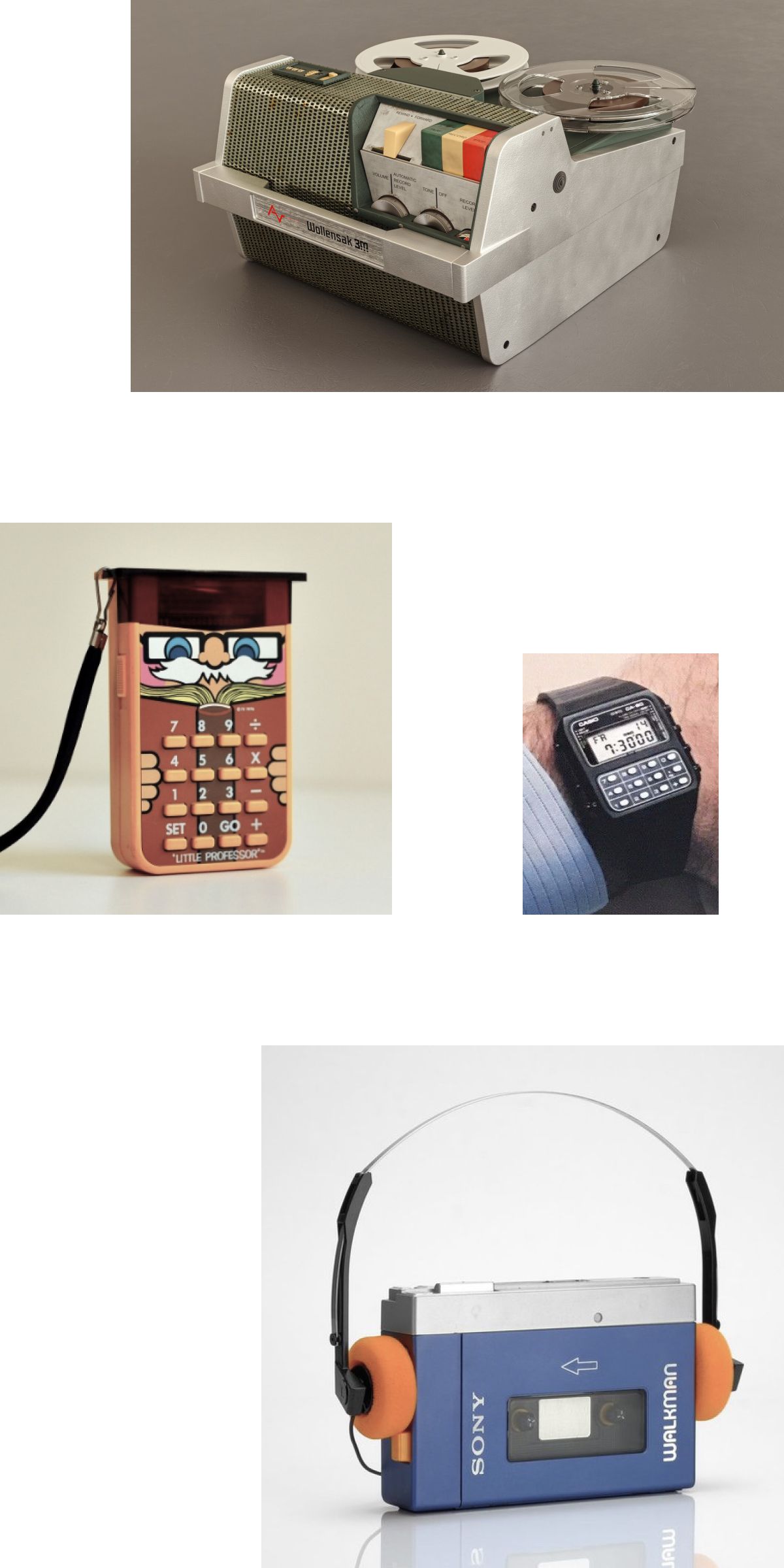
My younger brother, born a decade later than I was, mentioned an interesting object. It was the Cybiko, a Russian-made PDA for kids. He recalled that, though it looked cool and could run games and play music, the feature that astounded him was that it essentially generated a local social network, allowing users to wirelessly chat with one another at a range of up to 100 meters. It was like having a text-based walkie-talkie in your pocket.
What a cool idea — especially at a time when a ten-year-old could have freely communicated over the internet or mobile network but whose parents would have wisely prevented it.
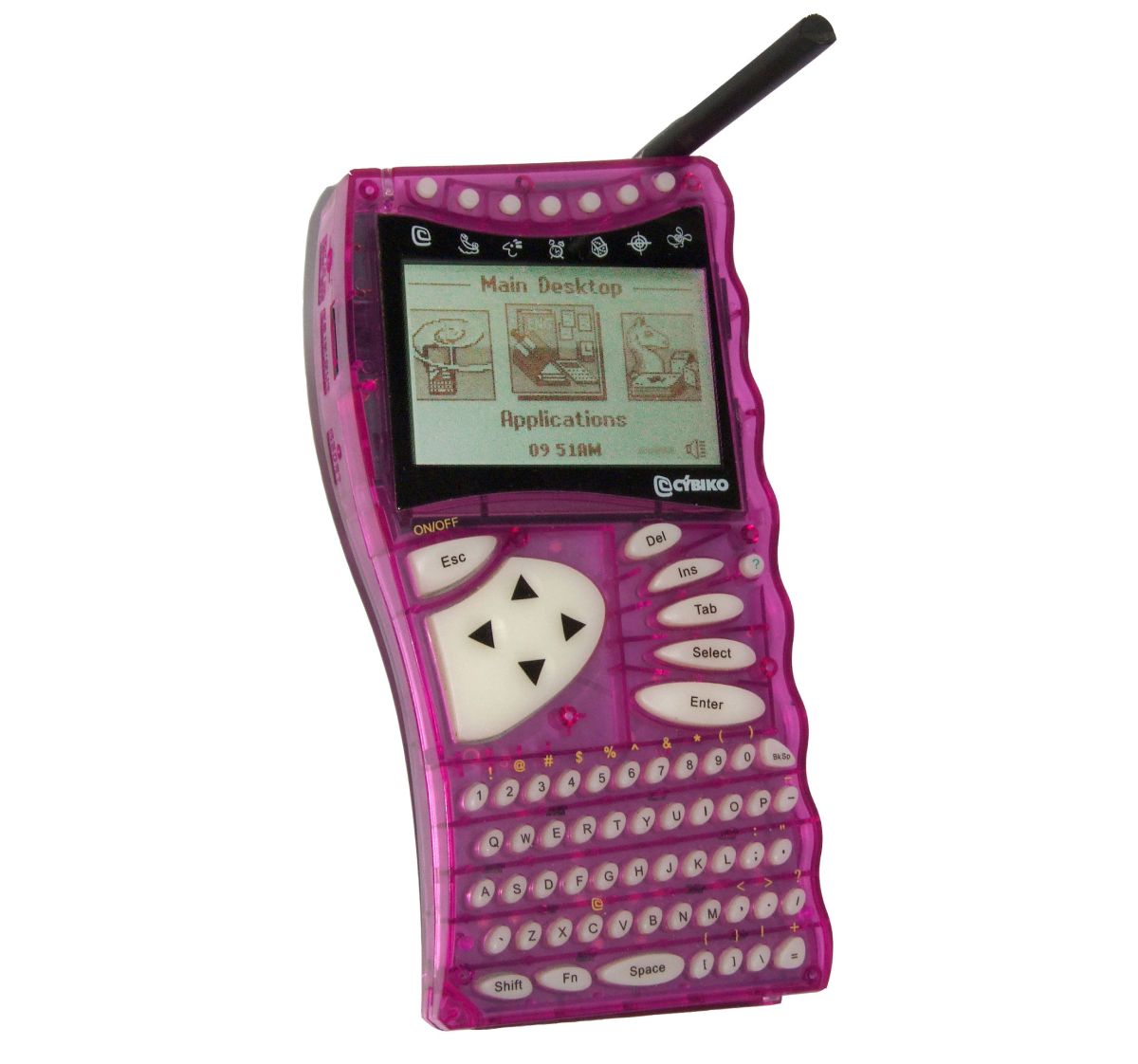
I would have been over twenty years old when my brother received his Cybiko. But it would have been just the sort of personal device I’d have found fascinating then, and still do today.
There’s something about the personal device that I have always found fascinating and now find to be almost mysterious. But to be personal it has to be a certain kind of device — the kind that balances access to another world with the kinds of limits and boundaries that make a thing private. That balance is something I’ve always been able to point to in particular objects — this has it, but that does not — but describing it on its own, as a set of rules or characteristics, has always eluded me. But, for me, a personal device is defined by this balance, not by virtue of being the thing in my pocket and not the one in yours.
I think this notion of a personal technology is deeply meaningful. So I’d like to find a way to explain it.
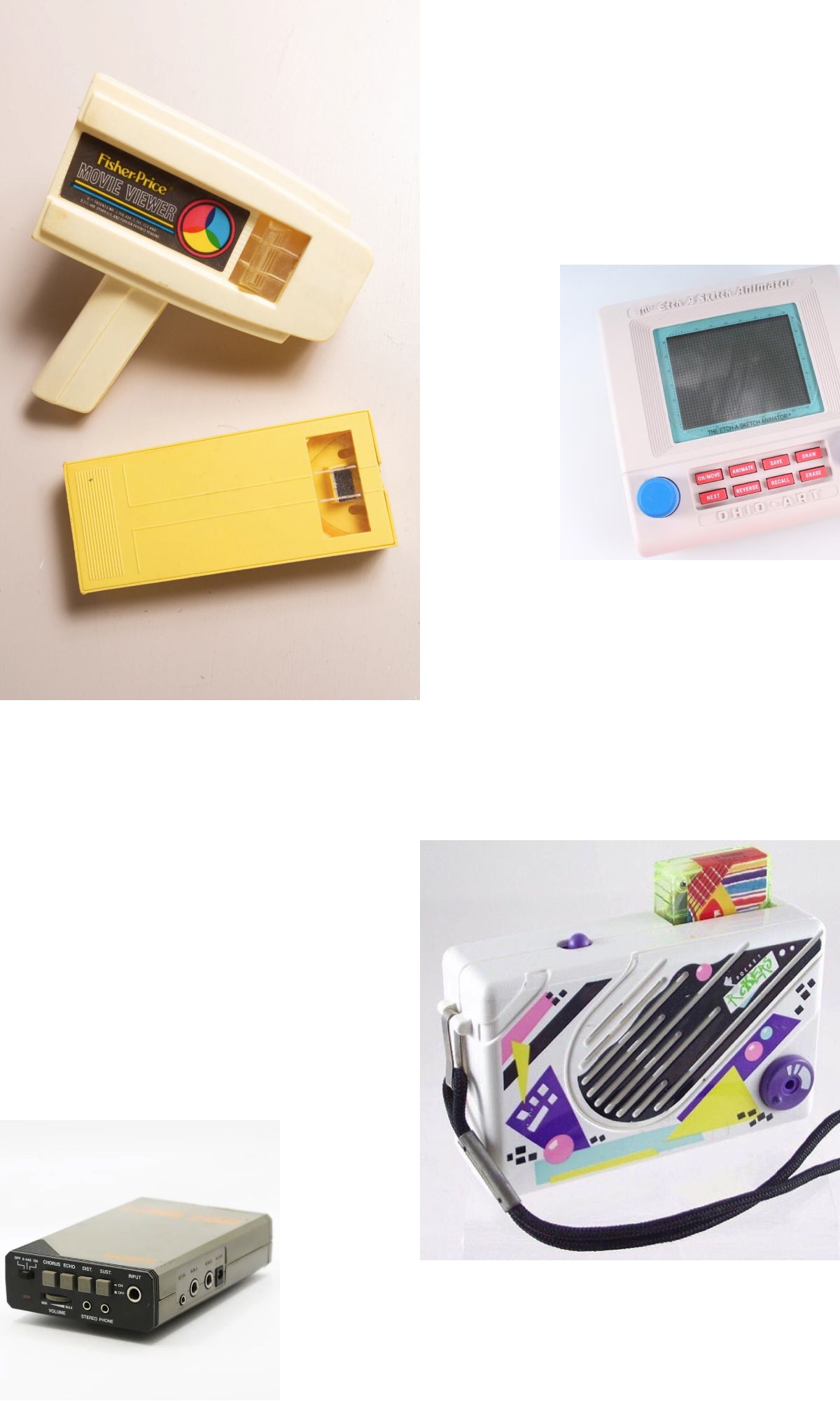
Nearly everyone I asked returned the question — That was the gadget for me… So, what was yours?
I can point to my own origin-objects — gadgets like the Fisher Price Movie Viewer, the Pocket Rocker, the Etch A Sketch Animator, or, from a bit later, the Arion Hot-Watt II — and describe why they had that thing. Besides being quirky, niche products, they all let me enter another world that, at times, seemed both bigger and smaller than this one. It was as if that world was outside of this one, made accessible by the push of a button and, at the same time, that it sprang into existence as a me-sized bubble universe, Population: 1. This is the paradox of the personal device.
The tension between knowing that the world a personal device creates has boundaries defined by its code and materials and not knowing exactly what they are is one that, when kept in balance, activates the imagination. It allows for exploration, both of the object and through the object.
People of a certain age who remember spending hours exploring Hyrule, the world of The Legend of Zelda, will immediately understand this feeling. You could explore the world, and you could play the game. I’m not sure I ever tired of exploring enough to actually play the game.
The most magical of personal devices are those which offer access to the experience of infinitude without measuring it for you. The unknown is the stuff of imagination.
That is the opposite of our most common device-based experiences today. Whether you use a phone, tablet, laptop, or any other computer, the digital “world” today is always defined by an acute awareness of measure. Of more. But more is the easiest way to obstruct the imagination. Persistent input keeps cognition at its lower levels — maintaining attention, storing memory, applying perception, and processing language — without allowing a transition to thought and learning.
The best personal device supports thought — with it, within it, and most importantly, within you. Carl Jung once wrote that “in each of us there is another whom we do not know.” The purpose of introspection, for Jung, was to become acquainted with that person — to deepen our understanding of ourselves so that we may be more fully ourselves.
What if technology had the same purpose?
What if personal technology saw imagination — open, unresolved, interior, and subjective as it is — not just as a byproduct of use but as a purpose for it; as equal to utility, communication, or entertainment?
Solutions to Complexity
I have been thinking about these pages ↓ for two decades.
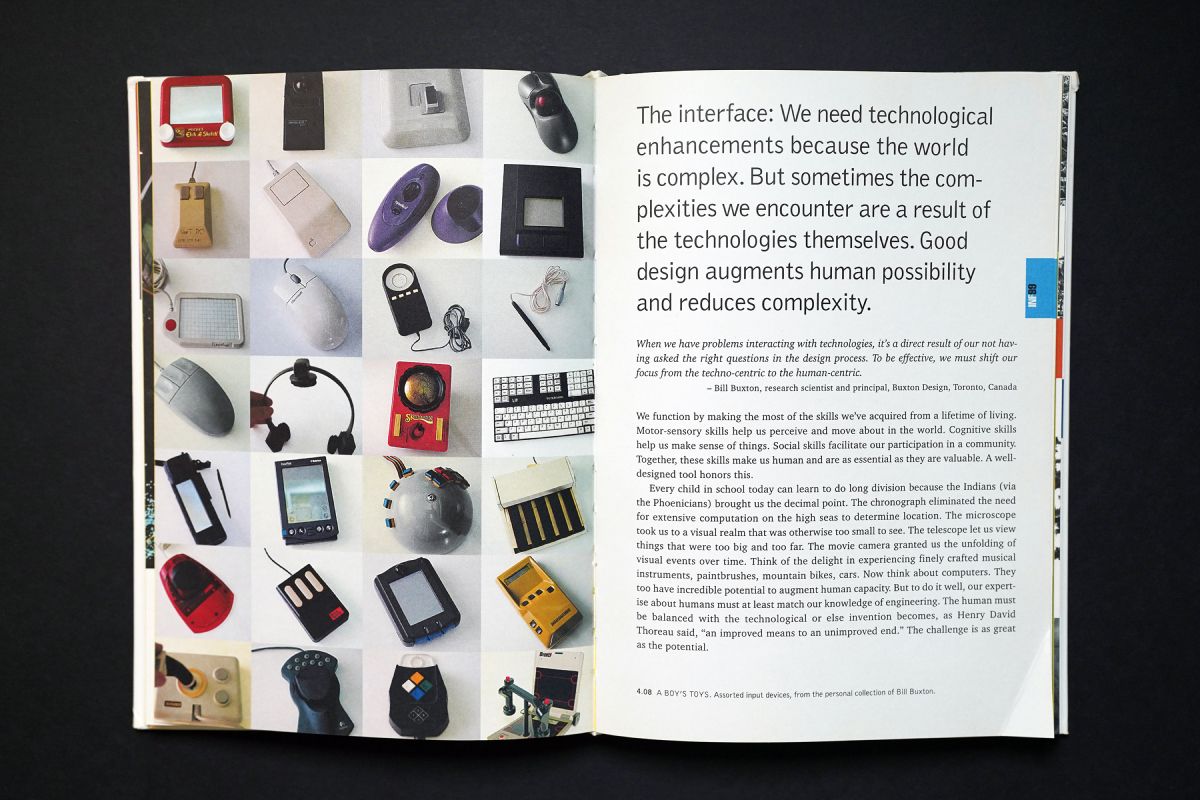
They come from Bruce Mau’s Massive Change, a text that — unlike so many other books about design, systems, technology, and human culture that speak loudly to their time and then never again — remains important. Has as much to say to today’s world as it did nearly twenty years ago, if not more. Was prescient. Is prophetic.
Read what Mau and those who comprised the Institute Without Boundaries had to say here, and then remember that it was written twenty years ago — when the most popular mobile phone was the Nokia 1100, Windows XP had just been released, the iTunes Store had opened for the very first time, and few people had ever experienced mobile computing. It would take a few years until laptop sales would exceed desktop; a few more before smartphone sales would exceed computers. It was a different time.
“The interface: We need technological enhancements because the world is complex. But sometimes the complexities we encounter are a result of the technologies themselves. Good design augments human possibility and reduces complexity…Think of the delight in experiencing finely crafted musical instrument, paintbrushes, mountain bikes, cars. Now think about computers. They too have incredible potential to augment human capacity. But to do it well, our expertise about humans must at least match our knowledge of engineering. The human must be balanced with the technological or else invention becomes, as Henry David Thoreau said, ‘an improved means to an unimproved end.’ The challenge is as great as the potential.”
These words were a powerful prompt. They could have easily opened the pitch for any number of devices of the time — either imaginary or in production. Steve Jobs could have cited them three years later, in between the refrain, “an iPod, a phone, an internet communicator”. He could have pointed to these pages when he said, “Are you getting it? These are not three separate devices!”
From the view of twenty years ago, the solution to complexity was complexity dressed up like simplicity. A better machine was one that replaced three and still “just worked.” Our expertise about humans suggested that we wanted to do more with less and our knowledge of engineering was able to deliver that.
But twenty years of increasingly technological everyday life has me reinterpreting Mau’s words on the interface.
Now, when I read of the need for technological solutions to complexity, I think less of gathering power at my fingertips and more about getting distance from it. When I think about the delight in experiencing a finely crafted object, I think less about features and more about feel.
When I read that passage, the words that once stood out — enhance, augment, engineering — recede, while others protrude with a new urgency: possibility, human, balance.
In hindsight, the smartphone tipped the scales in favor of technology. It did not balance the human with the technological. Of course, we wouldn’t really know that until later, and truth be told, plenty aren’t sure it’s even so today. For me, however, it is so; the debate is no longer interesting. But an effort to continue the process of invention, continue to calibrate our balance of the human and the technological, continue to imagine what the things we carry can and should do for us and what worlds they create — that is interesting.
In 2003, the idea that a music player, a phone, a computer, and a camera would all be the same object small enough to fit in your pocket was a dream worthy of pursuit. In 2023, it isn’t the object that is the problem, it’s the world that object has created around it. It’s a world of perpetual access and persistent distraction, of vamping and voyeurism, of want and waste, of noise and never being alone. That one little object wraps us in an inhuman aura that we are socially-pressured to deny as a luddite metaphor. But it is there. It’s invisible, but it may as well be a mechsuit. The world we make now is for living like that.
But it doesn’t have to be. It wasn’t always.
Our identity as humans-who-compute is probably irreversible. But our experience as slaves to the everything machine can be changed — should be.
Which, after all, is the more appealing metaphor to wrap oneself in — a mechsuit or a bubble universe of one? Which affords the greatest mobility? Which is most pliable to the growth of the interior — to the person inside?
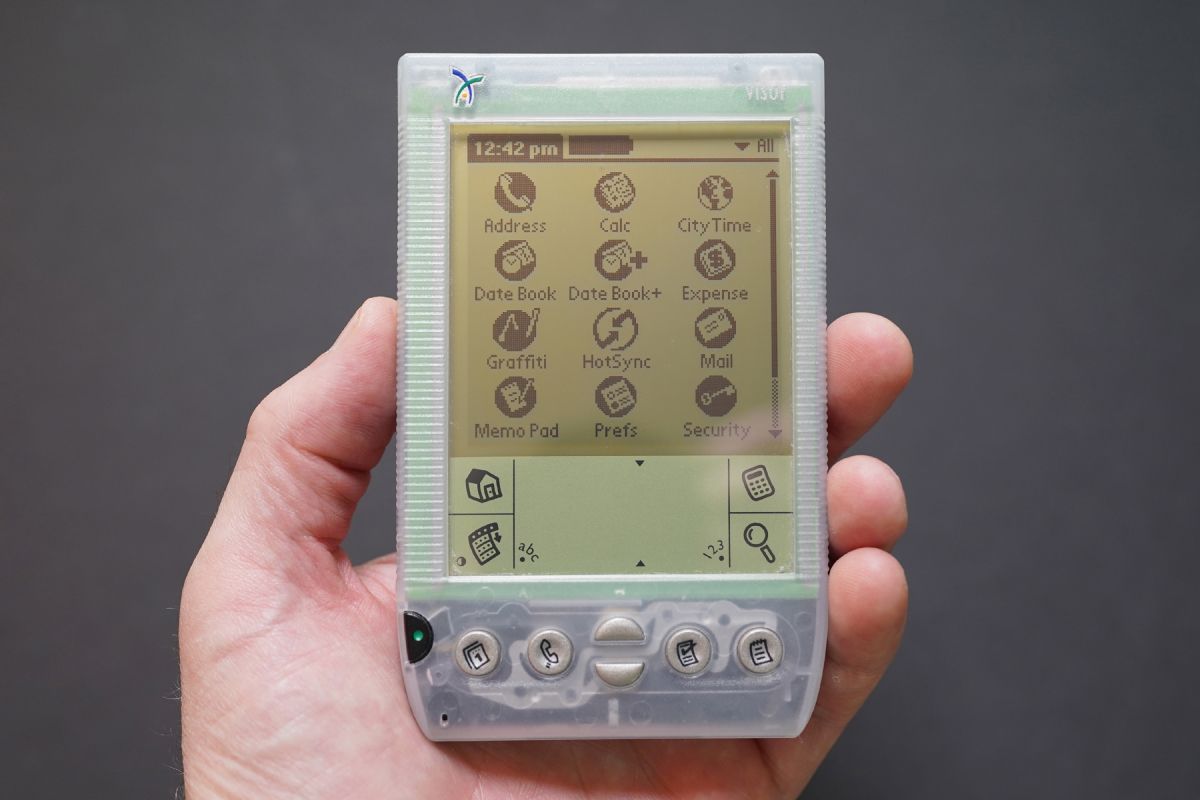
“The Dream of the Personal Machine”
Kyle Chayka is working on a book that sounds like it may make a good case for my invisible mechsuit world. In a post titled, “The dream of the personal machine,” Chayka writes:
“My book is so much about how technology dictates culture. The devices that we use aren’t just accessories to culture or windows that we consume things through; they are collaborators, gateways, and molds…the idea of a personal computer had to be invented, manufactured, and marketed. We had to imagine computers as personal machines.”
This is an important point. We could live in a world where computing is a public works — where terminals to central processing work like telephones used to. You can pick them up or put them down, but nothing inside of them is yours. But we don’t live in that world. As soon as the first computer booted up in the first home, the computer became a personal object. And when an object becomes personal, it is difficult to leave it behind. We want it with us.
Perhaps that one thing — a simple desire for a personal machine — set us on the course we have followed since. Not Moore’s Law, not Capitalism, but personhood.
Later, in the same post, Chayka writes of the Palm Pilot — an early attempt at portable computing — that, despite it not providing much in the way of “fun” features for a kid, there was still an “ineffable appeal to holding a gateway to a digital world in your hand.”
A world. There’s that word again.
Why a world? There is a sense of dimensional transcendence to computers. As C.S. Lewis wrote of the wardrobe, “It’s inside is bigger than its outside.” In the early days of mobile computing, it was hard to not compare the capaciousness of a computer you could carry with you to something like a book. Of both you could say their insides were bigger than their outsides, but when it came to information, you’d have to settle for figurative capaciousness in a book; their actual contents are literally cover to cover. A digital machine’s contents are an entirely different thing.
In the time of the Palm Pilot, a tiny door to a vast digital world was more powerful as an idea than a tool. The digital world just wasn’t as big back then as it is now. But to Chayka’s first point, we built the digital world using these little devices that didn’t do very much. We made it worth the journey. And meanwhile, the object was our companion, and inside was a tiny, personal digital world — our notes, our messages, our few digital texts. It was not much, but it was ours.
Chayka attributes his fascination with the personal machine to the anime he watched as a kid. He writes:
“What these fantastical, technological objects have in common is their ability to modify carriers’ immediate surroundings, flattening together the actual and the virtual and forming a window from reality into the unreal…Where Pokemon and Digimon depicted wholly alternate realities — virtual realms that were fun and cool, lol — the virtual world of today’s devices has simply overlaid the physical like a dense fog…I want a device that is truly personal, in that it is a reflection of the self (unique, changing, unstable).”
Chayka’s personal machine is one we probably believe we have already made — dozens of times over. But have we? We’ve made things we can carry that do more than we ever dreamed they could. But we’ve also made a world that consumes that power uniformly. There’s an assimilation to what the aura of technology does to us. If we could see the mechsuits, they’d all look the same.
Design Fictions and Mind Objects
I began with the simple idea that a single object can begin a lifelong fascination with technology. I still think that is true. But Kyle Chayka traces his lifelong interest to both real objects, like his Palm Pilot, and fictional ones.
Just as we all probably have that origin-object, we also probably have similar memories of design fictions that filled us with wonder and expectation.
Mine have to be standard among people of a certain age: the communicator used in the original series of Star Trek (its gold mesh exterior always intrigued me, not to mention the sound it made when flipped open), or the tricorders and PADDs of The Next Generation. They were so fully-formed and so well designed that they felt like prototyped inevitabilities, not props.
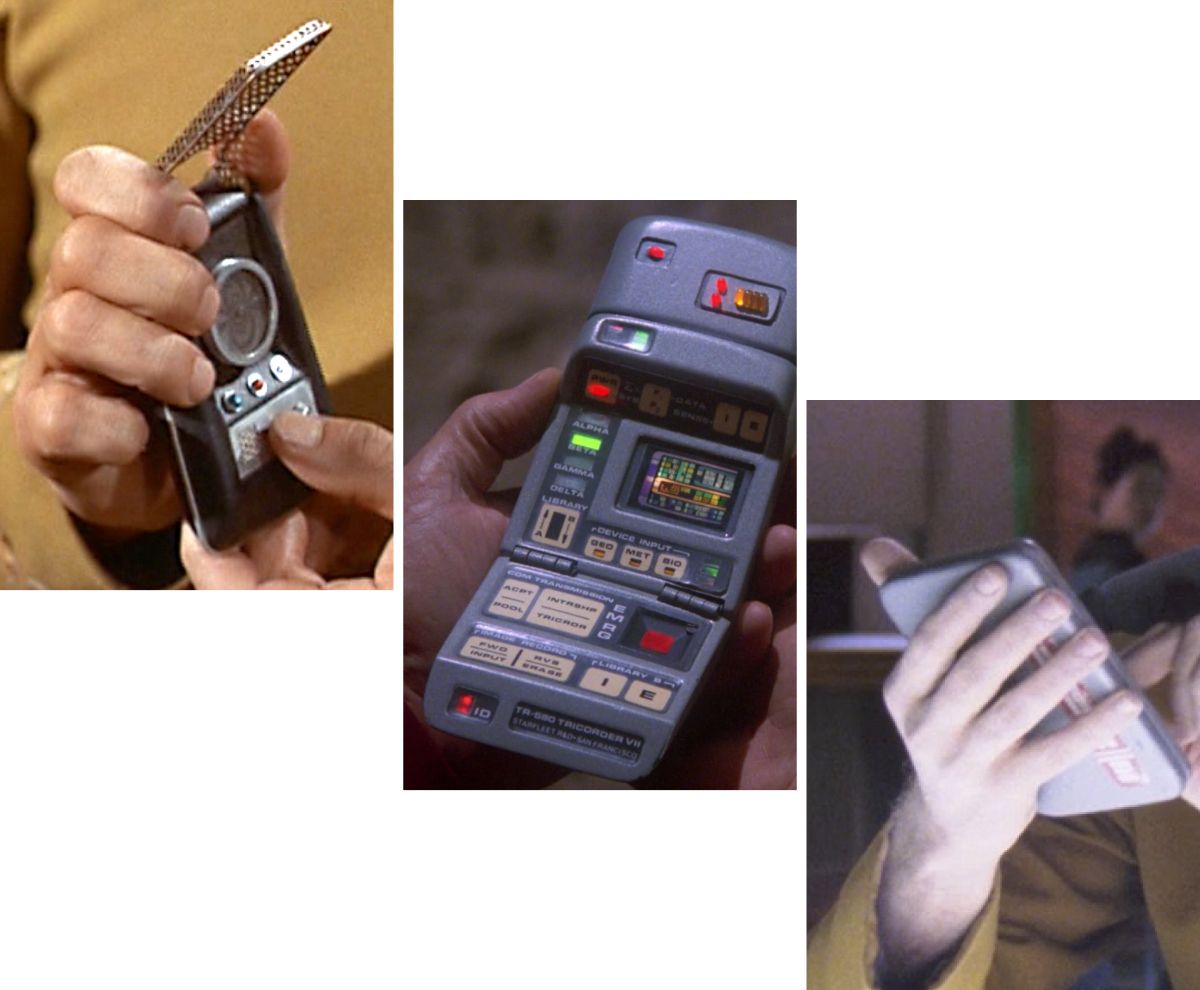
And yet, the Star Trek devices weren’t exactly personal, were they? The idea that these objects were interchangeable was telegraphed regularly. Crew members would hand each other PADDs. Tricorders were retrieved from general storage locations. Nothing had signs of the wear and tear that comes from daily use or even the hint of a personal patina. It was a communicator, not my communicator.
Chayka points out that the personal machines from anime were not only unique compared to the machines of our world and its glass-slab device vernacular, but were unique to the owner. There was not only a sense of the personal that came from a device being a person’s one device, but also from it being theirs — inside and out. As if the manufacture of the device was simply its birth; future growth came from its use and user. Nature and nurture.
I love that idea.
It’s also what makes me sad — still to this day — that modular concepts like Google’s Project Ara never caught on. It’s what makes exploring the Mobile Phone Museum so fascinating. Browsing its collection makes clear the aesthetic timeline leading directly to the current slab of glass in your hand right now. But you can also follow the strange tributaries that came from who-knows-where but were ultimately absorbed into the status quo. When I look at the diversity of form shown in that museum, I see an attempt to nurture the idea of a personal device.
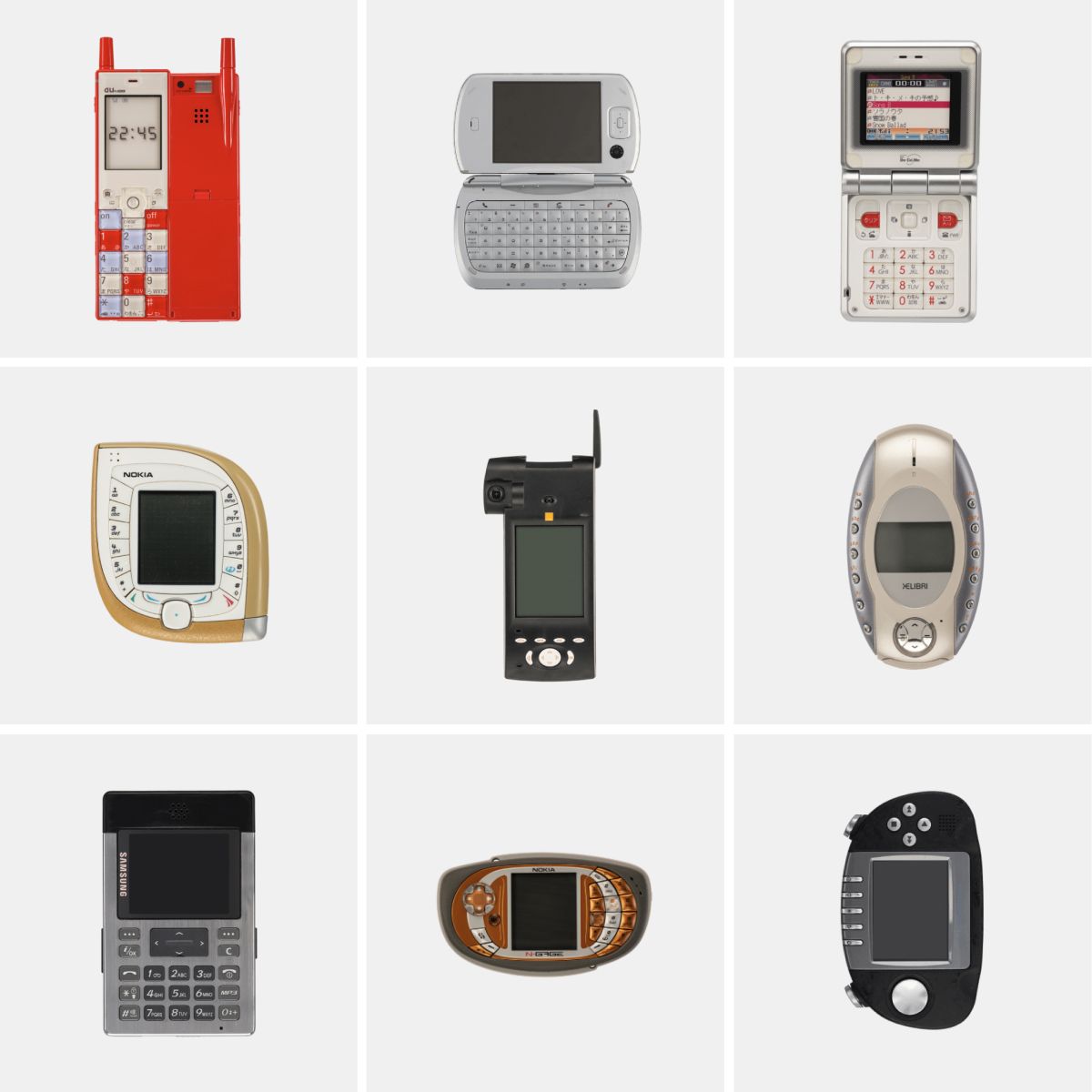
Back to fictions for a moment.
In Inspector Gadget, Penny has a computer book (thanks for sending me, Robin) that feels as bespoke as such a thing could be.
In Mary Doria Russell’s Children of God, a human character born on a distant planet after his mother’s mission was marooned there grows up using a decades-old tablet recovered from her derelict ship. It becomes as precious and personal to him as a diary or a family Bible of old — beginning not with the printed scripture but with the hand-etched names of one’s family tree. I pictured his tablet with an exquisite patina.
In Quantum Leap, the protagonist is regularly visited by the hologram of his friend, Al — somehow projected to him across time — who retrieves help every now and then from a handlink device connected to… something somewhere. As the show progressed, the handlink became so abstract I often wondered how Al — or any human — could actually use it. It had no screen, no discernible buttons. It was a handheld grid of pulsating color. It didn’t occur to me until decades later that perhaps the handlink was a visual metaphor — a projection within a projection — coming entirely from the mind of Al. That would make it a mind-object. A totem. Entirely imaginary, yet with real power.
My interpretation of Al’s handlink may tip the balance too far toward the metaphysical. But tipping is part of the calibration process, and if anything, we’ve tipped too far the other way for too long.
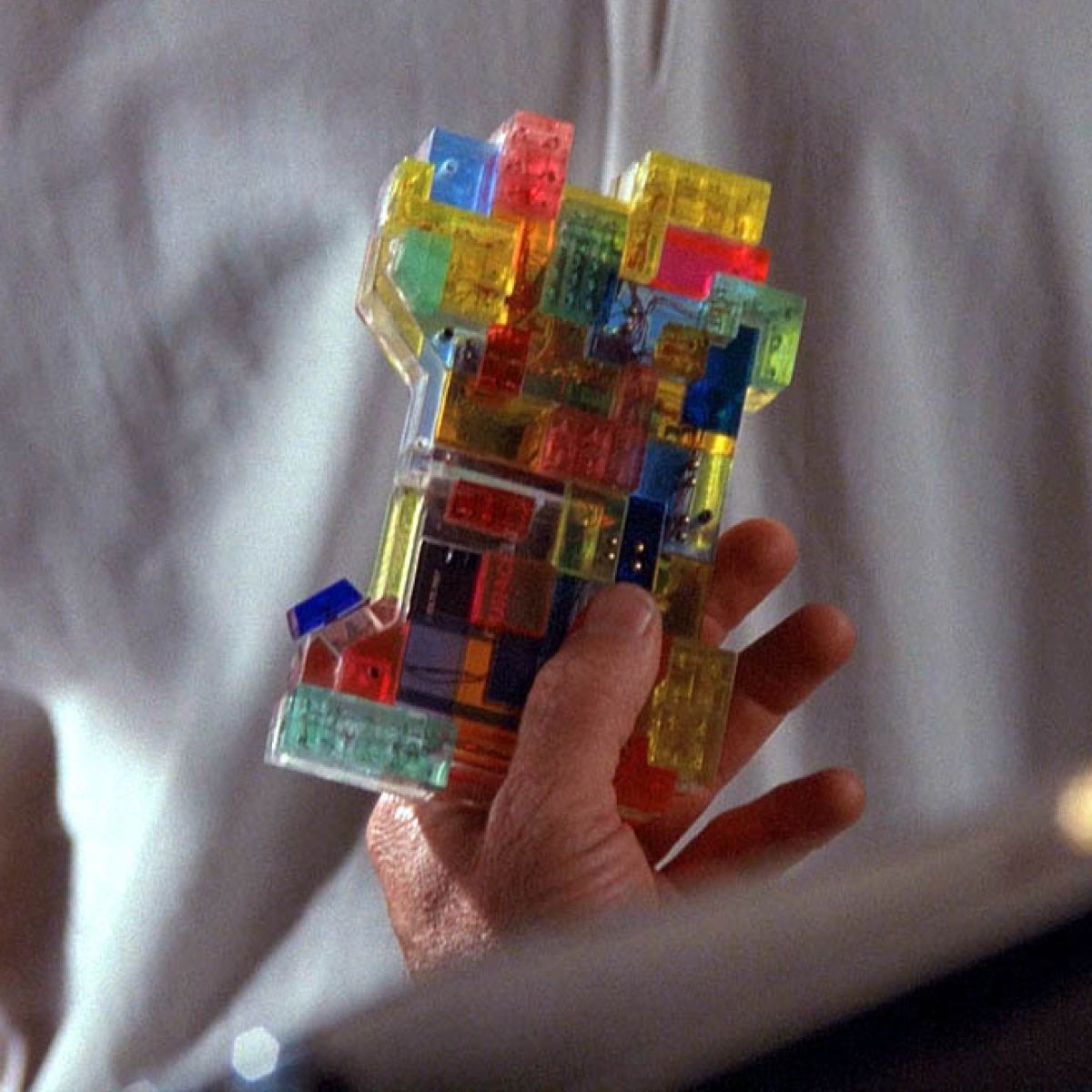
While I wait for the real world to shift in its personal machine culture, I’d be happy to see that happen in fiction first. All of my good examples are old! Contemporary science fiction is still replete with design fictions. But as sophisticated and believable as they have become — I’m especially thinking of the foldable of Westworld — they’re products. Regardless of the imagined economic conditions of these futures, the same old material supply chain and assembly line manufacturing seems to be at work. Show me someone making something of their own. Show me an imaginary imagined device in an imaginary world.
(If there are any young industrial designers reading, I feel like I’m writing a manifesto charged with just the right amount of practical ignorance.)
Building a personal machine is not just a design problem.
Many of the examples I’ve looked at so far align with my ideas of what makes a machine personal because they were designed with limitations imposed upon them, and many of the examples I’ve discussed that no longer feel personal have been designed to surpass those limitations. If machines were designed to be more personal, we’d have very different machines.
Sometimes it feels like it is simply a matter of whether a machine is connected to the internet or not. But of course it’s more than that. It’s as much about what we do with our machines as it is about what they were designed to do.
I think we can still experience the personal machine by choosing to experience a machine that way.
In a way, the continued popularity of vinyl is a good example of this. For the same price as a single record, you can get several months of access to more music than you could ever hear in that time. Still, some people choose records over digital files. It’s too easy to dismiss this as an affectation. It’s a choice to experience music in a particular way. It’s also a choice of a personal machine — a record player rather than a phone.
One benefit of personal technology reaching the maturity it has is the abundance of choices. It may seem like you must use an iPhone — perhaps everyone you know and care about is group messaging with iMessage — but you can choose something else. Every choice has benefits and costs. Ten years ago, I chose to leave Facebook. The benefits were many; the costs were not having easy access to where people I cared about shared information I wanted to know. A few years ago, I stopped using an e-reader — I had used a Kindle, and then a Kobo, both great machines. The cost was no longer being able to send articles from the web to my machine and reading them, as well as books, in bed. The benefit was not having too many choices in front of me when I just want to read one thing. I went back to the printed book. You could say that’s as much of an affectation in 2023 as playing a vinyl record. Maybe. But it’s a choice.
I haven’t owned a laptop for many years. My primary machine is a Mac Mini set up in my home office. The cost is I can’t work from my couch or the local coffee shop. The benefit is I have some separation in my life between work and not work.
For me, these choices turn using the same machines everyone uses into a more personal experience.
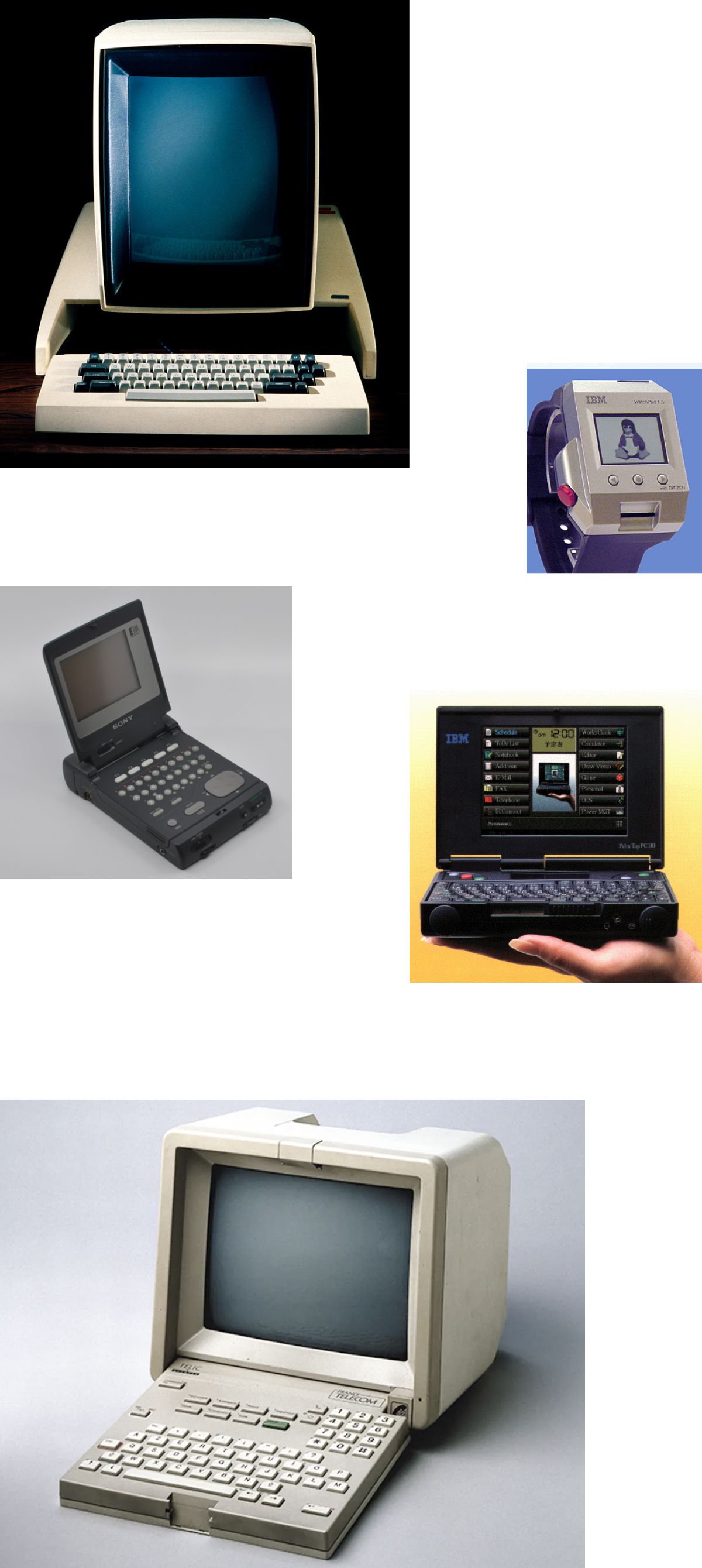
Don’t get me wrong, I can spend a lot of time indulging nostalgia for old machines that did less and imagining collecting them and using them again. In some cases, I’ve done that. I started using a minidisc player again recently. It’s much more work and has many more limitations than just opening up Apple Music on my phone. But, it’s fun and it’s mine. I own a few other pieces of old tech that mean something to me — my old Gameboy, my first cellphone, an old Handspring Visor. I keep these things running not for primary use, but to periodically re-experience that old feeling of using something that did less and required more of my imagination. Friction is underrated.
I also notice that when I look at these older machines and the old media they use, I often find myself feeling like I’m looking at a door to a world. I look at a book — there’s a world. Every playable disc in our house — each a world.
Once you become accustomed to worldspotting, you can see them in anything. Every object is a world.
In the World; of the Worlds
Perhaps the days of personal machines are over. Maybe the complexities that Mau and his cohort wrote about are not safely reducible. Maybe we can’t decomplexify the world of things. Maybe. And if we can, I wouldn’t dare imagine it could happen quickly.
But if we can, where do we start? What do we look at? What do we use again, despite there being sleeker, faster, frictionless options available? What limits do we embrace so that we can re-balance the human with the machine?
I have spent the last few years slowly disconnecting in various ways. I’ve chosen to use things that only do a part of what readily available alternatives do and more. I’ve chosen to stop using some things altogether. I have found that these choices have enhanced my experiences because they’ve supported true insight; they’ve helped me be more aware of what I’m doing, why I’m doing it, and who I am becoming. I have found that they change the world because they change my world.
Jung said that in each of us is another. I think that in each of us is another world. A good personal machine reveals that world and helps us shape it.
Christopher Butler, July 9, 2023
Filed under: Essays